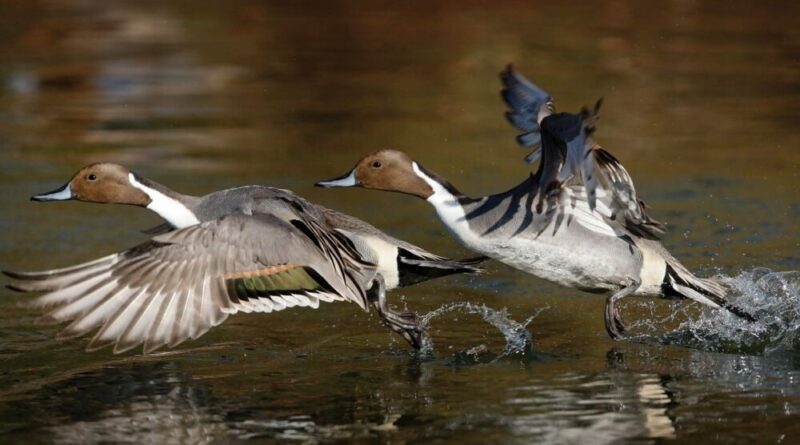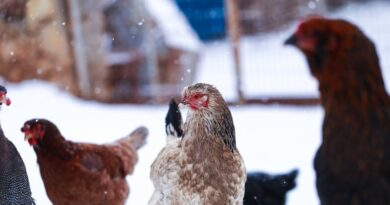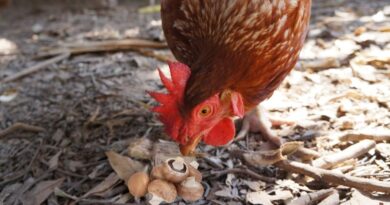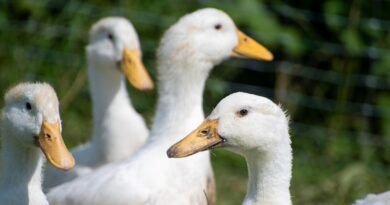Can Ducks Fly? Exploring the Facts About Their Flight Abilities
Ducks are fascinating creatures, admired for their waddling gaits, quacking sounds, and their unique place in ecosystems. One of the most intriguing aspects of ducks is their ability to fly. But how well do ducks fly? How far can they go, and what determines their flight abilities? In this article, we’ll explore the facts about duck flight, their adaptations, and the different factors that influence this incredible skill.
Understanding Duck Anatomy: Built for Flight
Ducks, like all birds, possess specific physical features that make them capable of flight. Their bodies are designed to optimize energy efficiency and mobility in the air.
Lightweight Skeleton
One of the primary adaptations for flight is their lightweight skeletal structure. Duck bones are pneumatic, meaning they are hollow and filled with air sacs, reducing weight while maintaining strength. This design enables ducks to take off, stay airborne, and maneuver effectively.
Powerful Wings
Duck wings are shaped in a way that provides the lift and thrust necessary for flight. With strong muscles like the pectorals, ducks can generate powerful wingbeats that keep them airborne over long distances.
Aerodynamic Bodies
Ducks have streamlined bodies that reduce air resistance during flight. This aerodynamic design helps them conserve energy, making long migrations possible.
Why Do Ducks Fly?
Ducks fly for various reasons, and understanding these motivations sheds light on their flight abilities.
Migration
One of the most well-known reasons ducks fly is migration. Many duck species migrate seasonally, traveling thousands of miles to find food, suitable climates, and breeding grounds. For example, mallards and northern pintails are famous for their long migrations, covering continents in their annual journeys.
Escaping Predators
Flight is also a crucial survival mechanism. When threatened by predators on land or water, ducks take to the skies as their primary means of escape.
Foraging for Food
Ducks often fly to find food. They may move between water bodies, agricultural fields, or wetlands in search of sustenance, particularly during times when food is scarce in their local habitat.
Breeding and Nesting
During breeding seasons, ducks fly to specific areas to build nests and lay eggs. Some species are highly territorial and will travel significant distances to find secure nesting sites.
How Far Can Ducks Fly?
The distance a duck can fly depends on the species, environmental conditions, and the purpose of the flight.
Short-Distance Flights
Some ducks, like the wood duck, are more localized in their movements. They generally stay within a few hundred miles of their habitat and rarely undertake long migrations.
Long-Distance Migrations
Migratory ducks, such as the teal or the mallard, can travel thousands of miles. For example, some northern pintails migrate from North America to Central or South America, covering distances of up to 7,000 miles.
Nonstop Flights
Astonishingly, some duck species are capable of nonstop flights lasting several hours or even days. For instance, the northern shoveler has been recorded flying non-stop for over 2,500 miles during migration.
Factors That Influence Duck Flight Abilities
Not all ducks are equally adept at flying. Several factors influence their flight abilities.
Species
Different duck species have varying flight capabilities. Diving ducks, such as scaup and canvasbacks, are less adept at flying compared to dabbling ducks like mallards. This is because diving ducks are more adapted to swimming and foraging underwater.
Physical Fitness
A duck’s physical condition significantly impacts its flight. Healthy, well-fed ducks with sufficient energy reserves are more capable of sustained flight than those that are malnourished or ill.
Weather Conditions
Weather plays a crucial role in duck flight. Favorable wind patterns, such as tailwinds, can boost flight efficiency, while headwinds and storms can hinder progress or force ducks to land.
Wing Molt
During the molting period, ducks shed and regrow their feathers. During this time, they are temporarily flightless, which makes them more vulnerable to predators.
Types of Duck Flight Patterns
Ducks exhibit several flight patterns depending on their needs and environment.
Straight-Line Flight
In this pattern, ducks fly in a straight path, often during migration or when traveling between feeding areas.
Zigzag Flight
When escaping predators, ducks often engage in erratic, zigzag flight patterns to evade capture. This maneuverability is especially noticeable in dabbling ducks.
V-Formation Flight
Ducks are often observed flying in a V-formation, particularly during migration. This formation reduces air resistance and conserves energy, allowing the flock to travel greater distances collectively.
Challenges Ducks Face During Flight
Flying is not always an easy task for ducks. They face several challenges, including:
Predators
Birds of prey, such as hawks and eagles, often target ducks during flight. Ducks rely on their agility and speed to escape.
Energy Demands
Long flights, particularly during migration, require immense energy. Ducks must build up fat reserves to sustain themselves over long distances.
Habitat Loss
Urbanization and climate change have led to the loss of wetlands, which serve as critical resting and feeding points during migration. This forces ducks to fly longer distances without breaks.
Ducks That Can’t Fly
While most ducks are proficient fliers, some species are flightless. These include:
Steamer Ducks
Found in South America, some species of steamer ducks are flightless. They rely on their powerful legs to move quickly over water.
Domestic Ducks
Many domesticated ducks, such as Pekins, have been bred for traits like size and meat production, which compromise their ability to fly.
How Fast Can Ducks Fly?
The speed at which ducks fly varies by species and circumstances.
Average Flight Speed
On average, ducks fly at speeds of 40 to 60 miles per hour.
Record Speeds
Some ducks can reach speeds of up to 70 miles per hour when aided by tailwinds. The canvasback, for example, is known for its rapid flight capabilities.
The Role of Flight in Duck Evolution
Flight has played a vital role in the evolution of ducks. Their ability to fly has enabled them to adapt to various habitats, evade predators, and expand their range across the globe. Over time, different species have developed specialized flight abilities to suit their ecological niches.
The Beauty of Duck Flight
Watching a flock of ducks take off from a lake or glide gracefully in the sky is a breathtaking sight. Their synchronized movements and ability to traverse vast distances showcase the wonders of nature.
Conclusion
Yes, ducks can fly—and they do so with incredible skill and purpose. From their anatomical adaptations to their migration patterns, ducks are truly remarkable fliers. Whether they are traveling thousands of miles or making a short trip to find food, flight is an essential part of their lives. Next time you see ducks soaring through the sky, take a moment to appreciate the complexities and marvels of their flight abilities




